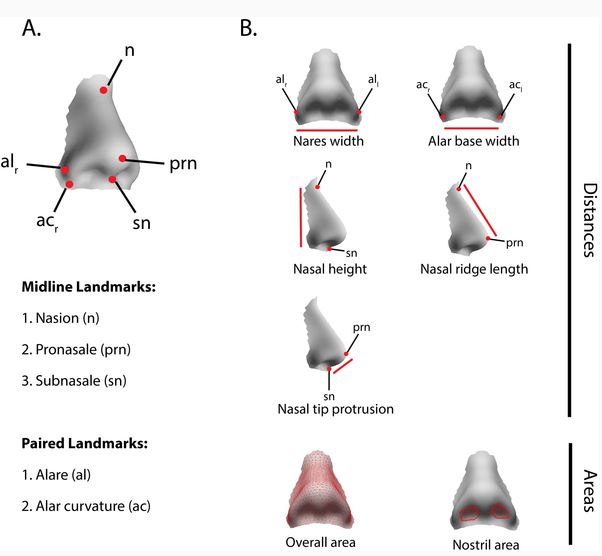The nose is one of our distinctive facial features. It conditions the air we breathe so it is warm and moist when it reaches the lungs, which helps prevent infections. And that may be why people whose ancestors lived in hot, humid places tend to have wider nostrils than people whose ancestors came from cold and dry environments.
In a new paper, anthropologists examined the size and shape of noses on people with West African, South Asian, East Asian, or Northern European ancestry and found that differences in nose shape across these populations are greater than can be explained by chance. Additionally, wider nostrils are correlated with ancestors who evolved in warmer temperatures and with greater absolute humidity, suggesting that climate was one factor driving nasal evolution.

A) The locations of landmarks, which were used to calculate linear distances, are shown as red points. B) Five Linear distances (red lines) and two surface areas (red mesh) were used to describe nose shape. Linear distances were calculated from the 3D coordinates of landmarks (red points). Surface areas were computed as the sum of the polygons highlighted in red.
http://dx.doi.org/10.1371/journal.pgen.1006616.g001
Evolutionary biologists may disagree. And then there were cultural factors. A "Greek" nose is not fashionably desired now but it certainly was once. But since the climate for people who left Greece long ago was much different in other regions, why have noses not evolved? Then we are back to science for explanations.
The researchers hope their finding extends beyond the social sciences, and suggest that it may be worth life scientists investigating whether the shape of the nose and the size of the nasal cavity impact one's risk of contracting a respiratory disease when living in a climate that is different from one's ancestors.






Comments